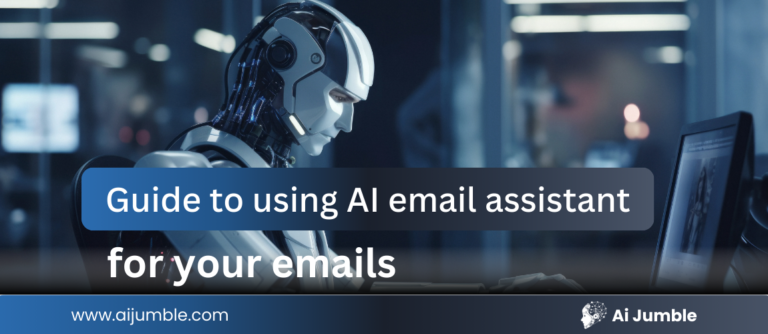AI-powered applicant tracking systems (ATS), also known as candidate tracking systems, have become a pivotal instrument in modern-day recruitment processes. In fact, 75% of employers have already adopted ATS, largely due to the presence of online job boards. The Internet and various job posting services have made job submission easy, meaning candidates can now apply for multiple jobs simultaneously with minimum effort.
What is ATS in Recruiting? Defining ATS
To define ATS and understand what ATS is in recruiting, it’s essential to recognize its role in talent acquisition. An Applicant Tracking System (ATS) is basically a software where applications submitted by candidates to employers are collected, sorted, scanned, and then ranked in order. The basic function of ATS is to make the hiring process more efficient by automating the initial review of CVs, ensuring that only the most relevant CVs are shortlisted to be reviewed by the hiring manager.
According to a study, 94% of recruiters, which include top companies like BMW, Google, PayPal, and Amazon, have reported an increase in their hiring process due to the implementation of ATS. Studies have indicated that there has been a significant rise in ATS usage. Recently, a survey conducted by GOHIRE suggested that 89% of companies with over 500 employees use ATS, and 36% of small businesses with less than 100 employees are now using ATS. Another survey report by Jobscan named 2023 ATS usage report revealed a staggering 97.4% of Fortune 500 companies rely on ATS for recruitment. This shows the importance of ATS in today’s recruitment scenario.
These systems have helped employers in streamlining and managing the influx of new candidates when there is an opening. However, the case of job seekers is a bit different, and navigating through the ATS can be a bit of a task, which can often lead to frustration in perfectly qualified candidates who get filtered out before human eyes can even reach their resumes. Understanding the functioning of Applicant Tracking Systems and adopting strategies in that direction to optimize your resume can highly increase your chances of leading to that desired interview round of your dream company.
How Does ATS Function? Understanding ATS Algorithms and ATS Robots
The ATS screening process has integral parts which have a significant effect on your chance of clearing ATS. To avoid getting rejected by ATS, you must first know how an ATS works and the processes it undertakes to screen out candidates’ applications. ATS algorithms and ATS robots play a crucial role in this process, utilizing resume parsing and candidate ranking techniques to evaluate applications efficiently.
AI Tools for Applicant Tracking Systems
AI tools have revolutionized the way application tracking systems operate, offering enhanced efficiency, automation, and data-driven decision-making. Some of the best ATS software and top 5 ATS systems leverage AI to automate candidate sourcing, screening, and engagement, saving recruiters time and effort.
Products like Beamery employ machine learning algorithms to analyze candidate data, identify top talent, and provide personalized candidate experiences. Additionally, Greenhouse utilizes AI to streamline the hiring process, automate administrative tasks, and generate valuable analytics for informed decision-making. These tools empower businesses to make data-driven hiring decisions, improve candidate experience, and ultimately accelerate time-to-hire.
In addition to the tools mentioned above, AI-powered chatbots like HireVue and Interview.io have become increasingly popular in the applicant tracking system landscape. These chatbots can conduct initial candidate screenings, saving time for recruiters and providing a more engaging experience for applicants. By leveraging AI and natural language processing, these chatbots can analyze candidate responses, assess their skills, and identify potential matches for specific roles. This not only streamlines the hiring process but also allows for more efficient and objective evaluations of candidates.
Keyword Matching: An Important Part of Applicant Tracking Systems
Applicant Tracking Systems scan CVs for specific keywords and phrases that match the job description. These keywords can include various things such as skills, qualifications, and experience relevant to the roles. The resume parsing capabilities of ATS are crucial in this process.
Formatting and structure of resumes that are not properly formatted or structured may not be able to parse correctly by the ATS, which leads to missing or misinterpreted information. Interestingly, a study suggests that 75% of applicants are often rejected in the resume-parsing stage, never reaching the scrutiny of recruiting managers.
The world’s top companies and dream employers of many use ATS as the initial screening tool. For example, Walmart, the world’s largest retailer, JPMorgan Chase, a financial institution, and Apple, a leader in technologies and design, all use ATS for recruitment automation.
Companies often keep their ATS selection and data practices confidential for security reasons, but there are some tips and tricks that can be used to clear ATS and improve your candidate experience.
Relevance and Rankings: Another Integral Part of Applicant Tracking Systems
The resumes which are optimized for specific job descriptions with relevant keywords in their CVs have 70% higher chances of being selected by ATS. Candidates should ensure that these exact terminologies appear in their CV; however, keyword stuffing should be avoided. After using the right keywords, the next step is to use simple formatting. The use of simple formatting can also prove to be very effective at times, as the ATS can struggle with complex formatting. Using simple fonts, avoiding images and graphics, and ensuring clear section headings can help in clearing the ATS.
This is the most important step in the journey of not getting rejected by ATS: tailor each resume by customizing it for every job opening you apply to. As you know, not all jobs are the same, and they have specific requirements, so how can all resumes be the same? They have to be tailor-made according to the role and company you are applying to. A study by LinkedIn found that personalized applications are 4x more likely to get an interview. Resist the urge to use a generic format for the resume and focus on customization.
Optimizing your file name is also one way to be properly categorized by an Applicant Tracking System. For example, name your file in such a way that (John_Smith_Marketing_Manager). This will ensure that the resume gets properly categorized by the ATS. Usage of templates designed with ATS in mind can also prove to be helpful.
The Future of ATS: Embracing Diversity, Inclusion, and Data Security
As AI-powered applicant tracking systems continue to evolve, there’s an increasing focus on diversity and inclusion, bias reduction, and GDPR compliance. Modern ATS tools are being designed to help companies build a more diverse talent pipeline while ensuring data security and protecting candidate information.
Skills assessment and video interviewing features are becoming more common in ATS, allowing for a more comprehensive evaluation of candidates. These advancements in sourcing automation and talent pool management are helping companies streamline their recruitment processes and make more informed hiring decisions.
Conclusion
Understanding ATS workings and optimizing your resumes accordingly can significantly improve your chances of selection by the ATS in the initial round of hiring. Doing all these steps, one must not forget their unique value proposition. While an Applicant Tracking System is a hurdle, it’s not the finish line. By incorporating these strategies, you’ll definitely increase your chance of getting past the first hurdle into the hands of a real person, where your USP, skills, and experience can shine and get you through.
As employer branding becomes increasingly important, companies are leveraging ATS to not only find the best candidates but also to create a positive candidate experience. By understanding how these systems work, job seekers can better navigate the application process and increase their chances of landing their dream job.
Have an AI tool to Submit?
AiJumble is the ultimate AI tools hub, featuring 5000+ tools and expanding daily. Get your AI tool listed or explore advertising opportunities to reach the right audience!





